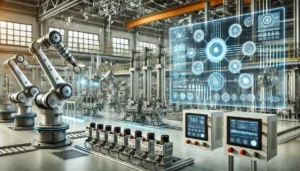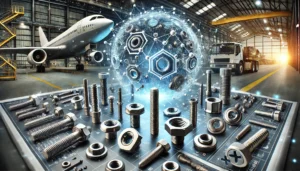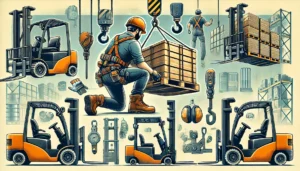Industrial belts, which are components in many mechanized systems, serve as crucial elements in the power, movement, and material transfer in various industries. The efficacy and lifespan of the conveyor systems deployed in manufacturing plants and distribution centers noticeably relies on the materials that constitute their belts. The primary issue in this sector of engineering is the durability, energy efficiency, and multi-functionality of industrial belts which stems from constant progress in material science. The purpose of this article is to look at innovative materials used in the death of industrial belts and how these materials improve performance and life expectancy of the belts.
1. Improved Polymers for Advanced Applications
Applications in industrial belt production have dramatically improved due to the inception of advanced polymers. The most popular choices have changed to polyurethanes (PU) and thermoplastic elastomers (TPE) because of their superior wear resistance, flexibility, and energy efficiency. For instance, PU belts are known for their high tensile strength and resistance to abrasion, making them ideal for use in logistics, food processing, and pharmaceuticals. On the other hand, TPE belts are better suited for exposure to oils and greases because they endure chemical attacks in economically demanding environments. The emergence of these polymers have resulted in the production of belts that don’t just have a longer shelf life, but also reduce operational strain and aids in energy conservation.
2. Reinforced Fabrics and Composites
Reinforced belts fabrics and composites are now added to industrial belts to improve their strength, durability, and impact resistance. To reinforce belts, materials like aramid fibers, such as Kevlar, and steel cords are used because they can endure high tensile stress, impacts, and abrasion. For instance, aramid reinforced belts are preferred in the mining and heavy-duty manufacturing industries due to their excellent strength-to-weight ratio. Steel reinforced belts are ideal for high-load systems, which require excellent strength and durability in the belts. These innovations enable belts to withstand more difficult tasks, extend their service life, and lower maintenance costs.
3. Eco-Friendly Materials
As more people become concerned about saving the environment, sustainable practices have started being incorporated within the industrial operations’ eco-friendly materials during manufacturing processes. Manufacturers are actively producing belts from plastics and synthetic rubber substitutes which alleviates the negative effects of conveyor systems on the environment. These eco-friendly belts, made from recycled plastics, are cost-effective and eliminate waste while comprehensively building a circular economy. Reclaimed materials can also provide the necessary strength and durability which makes them efficient for industrial application. Sustainable practices guarantee that industries continue performing efficiently while taking great measures to lessen their carbon emissions.
4. Enhanced Chemical Resistance
Belts in various industries have frequently been exposed to strong chemicals, gasses, and greases which have ruined the material overtime. For the improvement of this industry issue, advancements in belt material science have resulted in the creation of belts that have greater resistance towards chemical deterioration. Polyurethane and PVC are example materials that are designed to endure exposure to a wide variety of chemicals, making these materials suitable for use in food processing or even in engineering. These materials are resistant to chemical deterioration which increases the belt’s length of use while decreasing the need for maintenance and replacement. Moreover, the creation of chemically resistant belts have allowed different industries to function far more quicker and safer without the ever-present threat of belt malfunction from chemical contact.
5. High-Temperature Resistant Materials
Some conveyor systems in operations with increased temperature have to deal with belts that can sustain functionality even in extreme conditions. Heat resistant materials have developed recently, resulting in the production of belts that are able to function at elevated temperatures without losing their shape. The production of some belts that enable operation at temperatures above 200?C involve silicone and elastomers that are specially designed to withstand high temperatures. These high temperature resistant belts find application in industries such as metal processing, glass making and baking where temperature is normally in high ranges. These belts become highly flexible and durable despite intense heat, which averts breakdown of the belts and guarantees efficient ongoing operations.
6. Antimicrobial and Hygienic Belts
With the food processing, pharmaceuticals, and health care sectors, hygiene is fundamental because of the severe repercussions that could stem from contamination. Therefore, there is an increasing supply for belts that possess antimicrobial qualities. These types of belts are made from materials that prevent the development of bacteria, mold, and fungi which is vital for keeping production environments sanitary. Antimicrobial belts from polyurethane and PVC are common in the food industry because they are easy to clean and maintain and do not harbor microbes. This belt innovation guarantees hygiene compliance but also enhances the safety and quality of the products significantly.
7. Lightweight and Energy-Efficient Belts
There is a noticeable improvement on energy efficiency and power expenditure with the reduction in the weight of conveyor belts. The usage of low-powered belts translates to savings on both energy and operational costs. Moreover, modern materials such as aramid fiber or light thermoplastic composites possess both high tensile strength and low density, making these materials perfect for high speed systems that are energy sensitive. This weight reduction not only relieves the stress on the conveyor parts but also increases the longevity of the belt and the accompanying machinery. As for industries that are concerned about energy usage, lightweight belts provide a straightforward approach for boosting system efficiency and reducing energy expenses.
8. Smart Belts with Embedded Sensors
The integration of smart technology into conveyor belts is one of the most innovative features in the industrial belt technology sector. Certain modern conveyor belts have embedded sensors that monitor parameters like temperature, tension, and wear in real time. Such sensors enable early detection of potential problems and aid in predictive maintenance, which can enhance system reliability and minimize unplanned downtimes. Companies can proactively respond to issues before they escalate to expensive repairs; as such, company profits dramatically increase. Data collection and analysis in real time improves conveyor system efficiency and ensures that the monitored belts are working correctly, which in turn, prolongs their useful life.
9. Durable and Impact Resistant Belts
The long-lasting nature of belts in industries where heavy and fragile materials are handled is vital. To respond to such conditions, improvements in the design and materials of belts have resulted in belts which are able to withstand a high level of impact and abrasion. Rubber, reinforced with steel or aramid fiber, is well-suited for belts which must bear high impact and abrasive materials. These belts are necessary in industries such as mining, construction, and recycling, which require the use of heavy-duty belts in extremely harsh and abrasive environments. High-impact and abrasion-resistant belts increase productivity and self-sufficiency in operations. Moreover, their long durability increases cost-effectiveness and reduces maintenance expenditure in the long run.
10. Customizable And Modular Belts
Modular belts can be manufactured based on a company’s operational requirements since they are designed in the form of pieces that latch together. This specific structure provides freedom in belt design, which can be constructed for specialized purposes like transporting fragile goods or working in extreme temperatures. Additionally, modular belts are ideal for industries which frequently need repairs or adjustments. These belts can easily be repaired and expanded by swapping out different pieces. The broad range of designs that can be created with these belts allows businesses to change the conveyor belt system to cater to a new product or other shifting needs.
Conclusion
As modern industrial needs evolve, the materials used to manufacture industrial belts continuously improve in flexibility, strength, durability, as well as energy efficiency. These include new polymers, reinforced fabrics, and environmentally friendly or heat resistant materials. Such innovations make it possible for various industries to enhance the functionality of their conveyor systems, and as a result, increase the efficiency of business processes. Further development of smart technologies as well as the customization options available for industrial belts have the potential to make them even more cost effective and sustainable while increasing operational performance. The companies adopting these new materials stand to gain the most from enhanced productivity and reliability of their belts and operational processes as well as increased life span of the belts.










